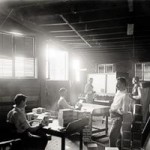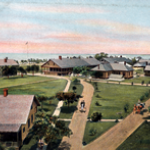Meadows
Key West Armory
The Armory was in such an advanced state of deterioration by 1969 that the State granted the City permission for it’s demolition. Joseph Allen and State Representative William Roberts fought to save the building and were instrumental in forming the Historic Preservation Board. Preservationists James Shields, Edward & Joan Knight, Larry Nettler, Mary Lee Graham and Norman Artman are also credited with preserving the structure.
E.H. Gato Cigar Factory
This is the second Gato cigar factory built on this site. The first structure was a wooden factory built in 1884 and destroyed by fire in 1915. The second factory was built as a hurricane and fire proof structure in 1920. It features large windows and a central open-air courtyard to capture the best light to select premium tobacco leaves. The factory employed 500 cigar artisans and produced sixty thousand hand rolled cigars in 1890. 
Gatoville
Edward H. Gato created one of the first successful industrial communities in the US. By building 40 cigar makers cottages around his cigar factory Gato attracted the most talented workers. The homes were simple two room wooden structures, with a porch facing the street and an outhouse in back. Gato supported the entrepreneurial and community spirit of his workers, encouraging them to start businesses of their own, ranging from groceries and saloons to confectionary shops and private schools.
Yellow Fever
This green, picket-lined field is a military cemetery. Many of the grave sites hold the remains of Civil War soldiers who died from yellow fever. More soldiers were struck down in the South by disease than by armed skirmishes. Yellow fever was greatly feared and misunderstood throughout the 1800s. Ships, cities and homes were quarantined to stop the disease. A Key West doctor, Joseph Yates Porter’s use of quarantines was an important step to finding a cure for the disease in the early 1900s.
North Beach Building
Built for U.S. Army officers, these buildings are a good example of turn of the century military housing. Once part of the Peary Court Army Garrison, they were moved here in the 1940's. North Beach Road connected Peary Court to Truman Avenue. This area was prime waterfront property facing Garrison Bight. As the island expanded the beach side of the street was land locked by development. The road was renamed in honor President Eisenhower.




